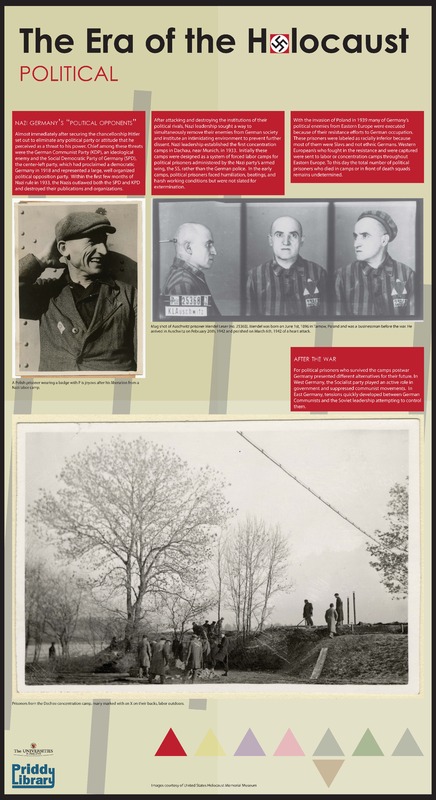Political Prisoners
NAZI GERMANY’S “POLITICAL OPPONENTS”
Almost immediately after securing the chancellorship Hitler
set out to eliminate any political party or attitude that he
perceived as a threat to his power. Chief among these threats
were the German Communist Party (KDP), an ideological
enemy and the Social Democratic Party of Germany (SPD),
the center-left party, which had proclaimed a democratic
Germany in 1918 and represented a large, well organized
political opposition party. Within the first few months of
Nazi rule in 1933, the Nazis outlawed both the SPD and KPD
and destroyed their publications and organizations.
After attacking and destroying the institutions of their
political rivals, Nazi leadership sought a way to
simultaneously remove their enemies from German society
and institute an intimidating environment to prevent further
dissent. Nazi leadership established the first concentration
camps in Dachau, near Munich, in 1933. Initially these
camps were designed as a system of forced labor camps for
political prisoners administered by the Nazi party’s armed
wing, the SS, rather than the German police. In the early
camps, political prisoners faced humiliation, beatings, and
harsh working conditions but were not slated for
extermination.
With the invasion of Poland in 1939 many of Germany’s
political enemies from Eastern Europe were executed
because of their resistance efforts to German occupation.
These prisoners were labeled as racially inferior because
most of them were Slavs and not ethnic Germans. Western
European’s who fought in the resistance and were captured
were sent to labor or concentration camps throughout
Eastern Europe. To this day the total number of political
prisoners who died in camps or in front of death squads
remains undetermined.
AFTER THE WAR
For political prisoners who survived the camps postwar
Germany presented different alternatives for their future. In
West Germany, the Socialist party played an active role in
government and suppressed communist movements. In
East Germany, tensions quickly developed between German
Communists and the Soviet leadership attempting to control
them.
